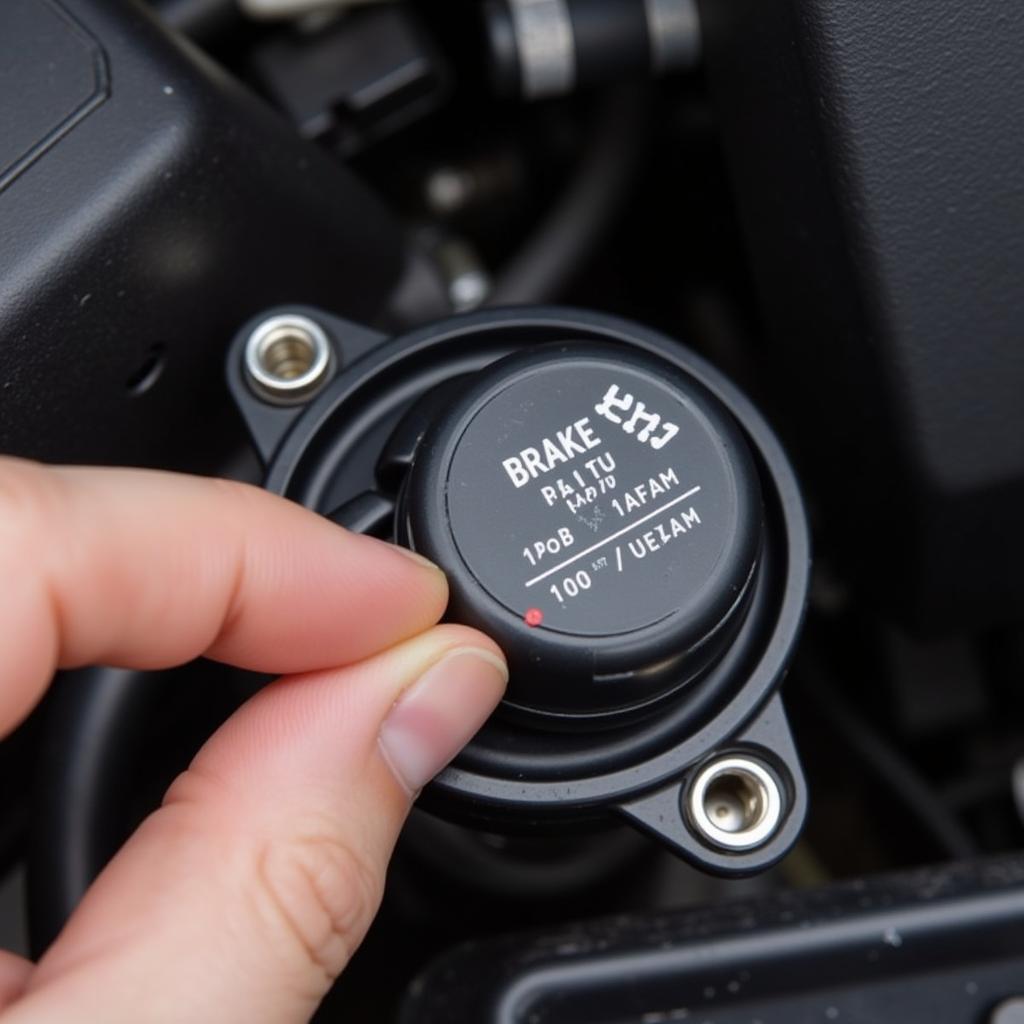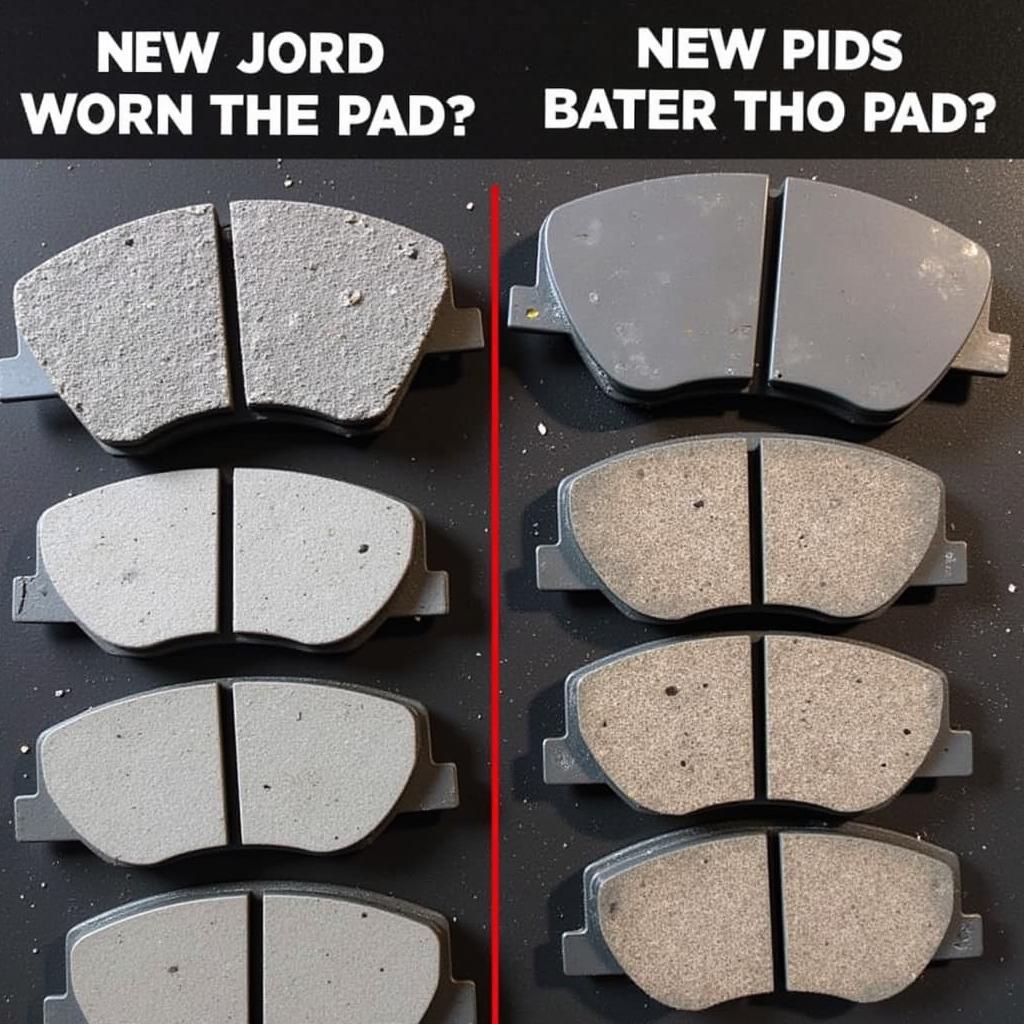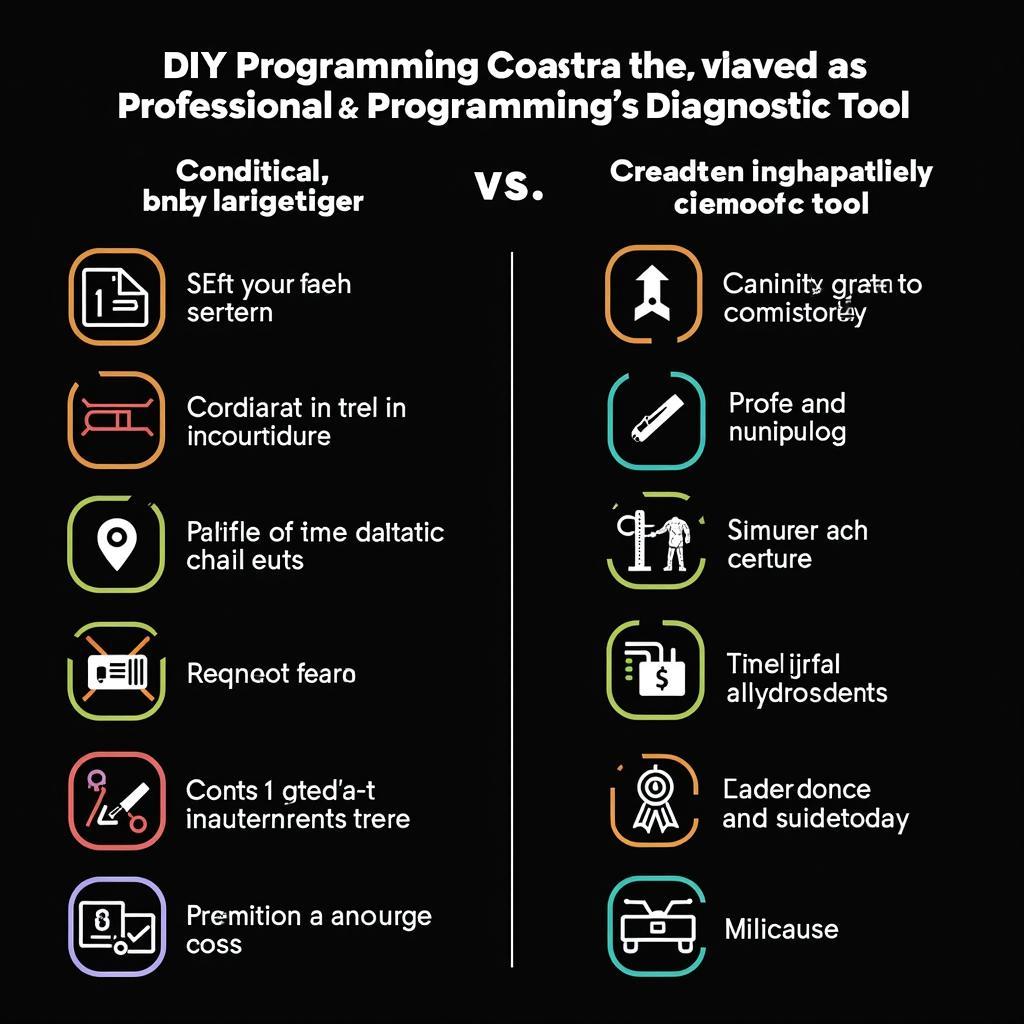The brake system warning light on your Toyota Yaris is a crucial safety feature designed to alert you of potential issues. Ignoring it could lead to reduced braking performance and increase the risk of accidents. This comprehensive guide will walk you through the common causes of the brake system warning light illuminating on a Toyota Yaris and provide practical solutions to help you address the problem effectively.
Understanding Your Toyota Yaris Brake Warning Light
When you start your Yaris, the brake system warning light should illuminate briefly and then turn off once the system completes its self-check. However, if the light stays on, flashes intermittently, or comes on while driving, it signals a problem requiring immediate attention.
There are several reasons why your Toyota Yaris brake warning light might be on:
- Low Brake Fluid Level: This is the most common cause. Brake fluid is essential for transmitting force from the brake pedal to the wheels. A leak in the system can lead to a drop in brake fluid level, triggering the warning light.
- Worn Brake Pads: Your brake pads are designed to wear down over time. When they reach a certain thickness, the brake pad wear sensor will make contact, illuminating the warning light.
- Faulty Brake Light Switch: The brake light switch is responsible for activating your brake lights when you press the pedal. A malfunctioning switch can cause the brake system warning light to come on.
- ABS Issue: If there is a problem with your Anti-lock Braking System (ABS), such as a faulty wheel speed sensor, the ABS warning light may illuminate alongside the brake system warning light.
- Other Issues: Less common causes include a faulty master cylinder, brake booster problems, or issues with the electronic brake-force distribution system.
Troubleshooting a Brake System Warning Light on a Toyota Yaris
Here’s a step-by-step guide to help you diagnose and potentially fix the brake system warning light on your Yaris:
- Check the Brake Fluid Level: Park your car on a level surface, open the hood, and locate the brake fluid reservoir. The reservoir is usually translucent, allowing you to visually inspect the fluid level. If the fluid is low, add the recommended brake fluid for your Yaris. Refer to your owner’s manual for the correct type.
- Inspect for Leaks: While checking the fluid level, carefully examine the area around the master cylinder, brake lines, and near the wheels for any signs of leaks. Look for wet spots, drips, or puddles of brake fluid. If you detect a leak, it’s crucial to have a professional mechanic repair it immediately.
- Check the Brake Pads: If the brake fluid level is normal and there are no visible leaks, the next step is to inspect the brake pads. You can often visually check the pad thickness through the spaces between the wheel spokes. If the pads appear thin or worn, it’s time for a replacement.
- Inspect the Brake Light Switch: Locate the brake light switch, typically found above the brake pedal arm. Check for any loose connections or damage to the switch itself. You can test the switch by depressing the brake pedal and observing if the brake lights illuminate. If the lights don’t come on, the switch may need replacing.
 Checking Brake Fluid Level in Toyota Yaris
Checking Brake Fluid Level in Toyota Yaris
When to Seek Professional Help
While some causes of a brake system warning light can be addressed with basic troubleshooting, it’s important to remember that brakes are a critical safety system. If you are uncomfortable performing these checks yourself, or if the warning light persists after performing these steps, it’s best to take your Yaris to a qualified mechanic immediately.
 Mechanic Inspecting Toyota Yaris Brakes
Mechanic Inspecting Toyota Yaris Brakes
Importance of Timely Brake System Maintenance
Regular maintenance is crucial for ensuring the optimal performance and longevity of your Toyota Yaris brake system. Follow the recommended maintenance schedule in your owner’s manual for brake fluid flushes, brake pad replacements, and other essential checks.
“Neglecting your brake system is like playing Russian roulette with your safety. Regular checks and timely maintenance can be the difference between a close call and a catastrophe.” – John Smith, Senior Automotive Technician at ABC Auto Services.
Brake System Warning Light Toyota Yaris: FAQs
Q: Can I drive my Yaris with the brake warning light on?
A: It is strongly advised against driving with the brake warning light illuminated. It indicates a potential issue with your braking system, which could lead to reduced braking performance and increase the risk of an accident.
Q: How much does it cost to fix a brake system warning light on a Toyota Yaris?
A: The cost of repair can vary significantly depending on the underlying cause. A simple brake fluid top-up might cost a few dollars, while replacing worn brake pads could cost a couple hundred. More complex repairs like replacing a faulty master cylinder or ABS components can cost significantly more.
Q: How often should I check my brake fluid level?
A: It’s a good practice to check your brake fluid level at least once a month and more frequently if you notice any changes in brake pedal feel or performance.
Q: How long can I drive with worn brake pads?
A: Driving with worn brake pads is extremely dangerous. As a rule of thumb, if your brake pads are less than ¼ inch thick, it’s time for a replacement.
 Comparison of Worn Brake Pads and New Brake Pads
Comparison of Worn Brake Pads and New Brake Pads
Conclusion
Addressing a brake system warning light on your Toyota Yaris promptly is crucial for your safety and the longevity of your vehicle. By understanding the common causes, performing basic troubleshooting, and seeking professional help when necessary, you can ensure your Yaris continues to deliver reliable and safe braking performance for miles to come.

